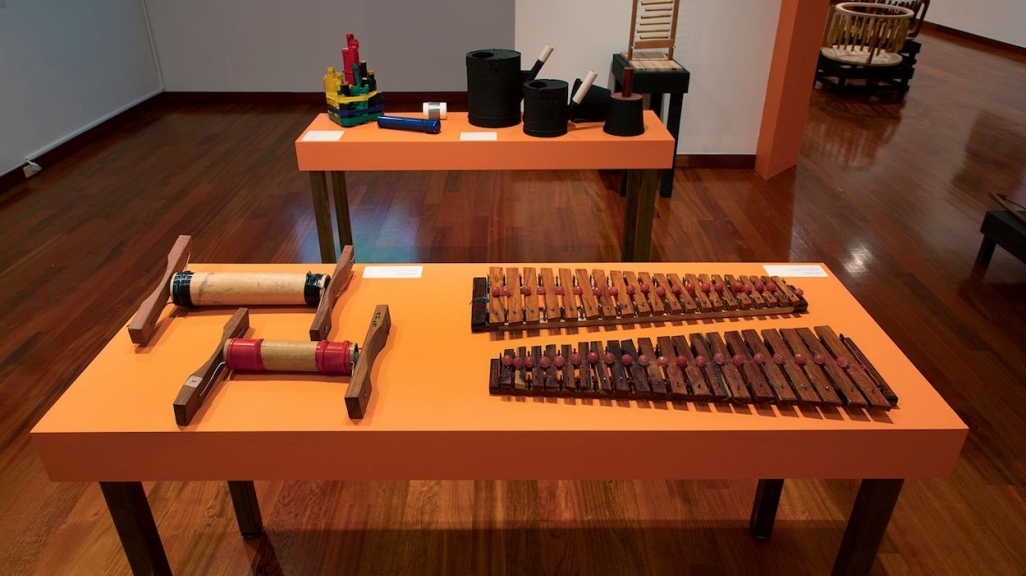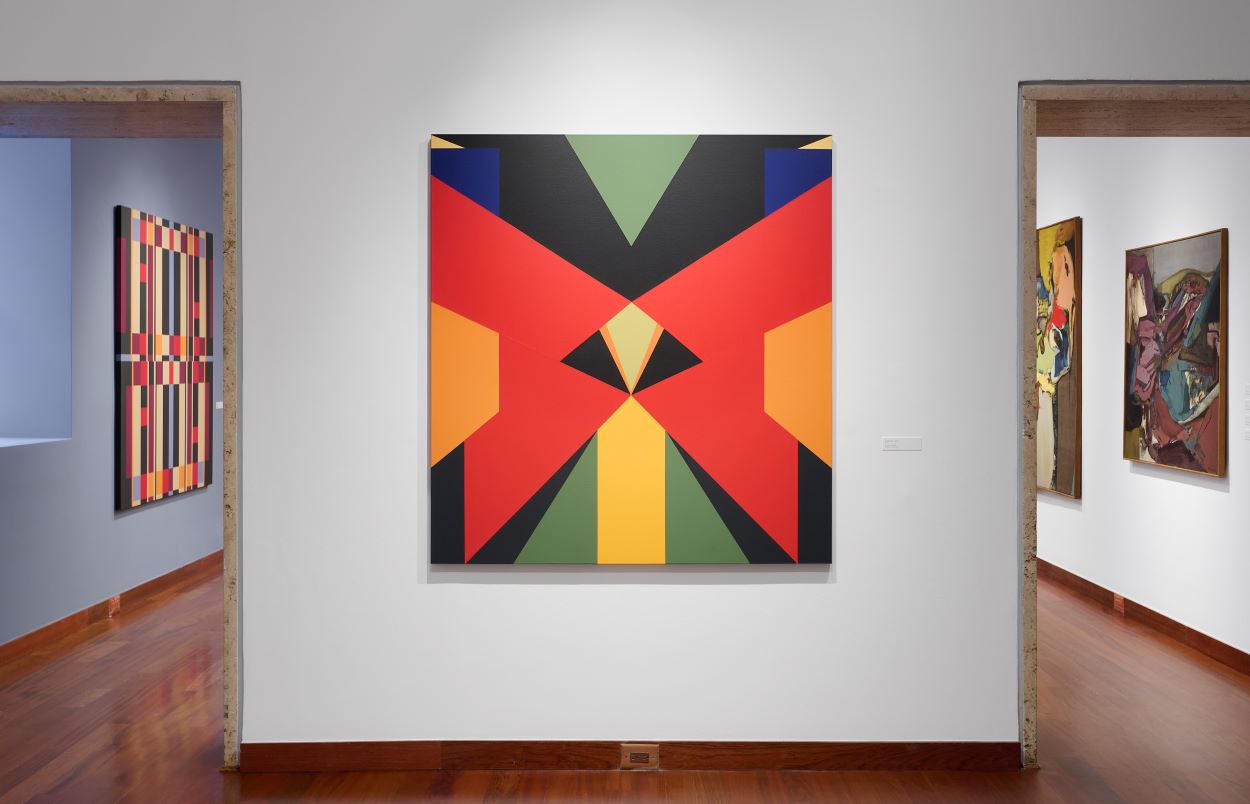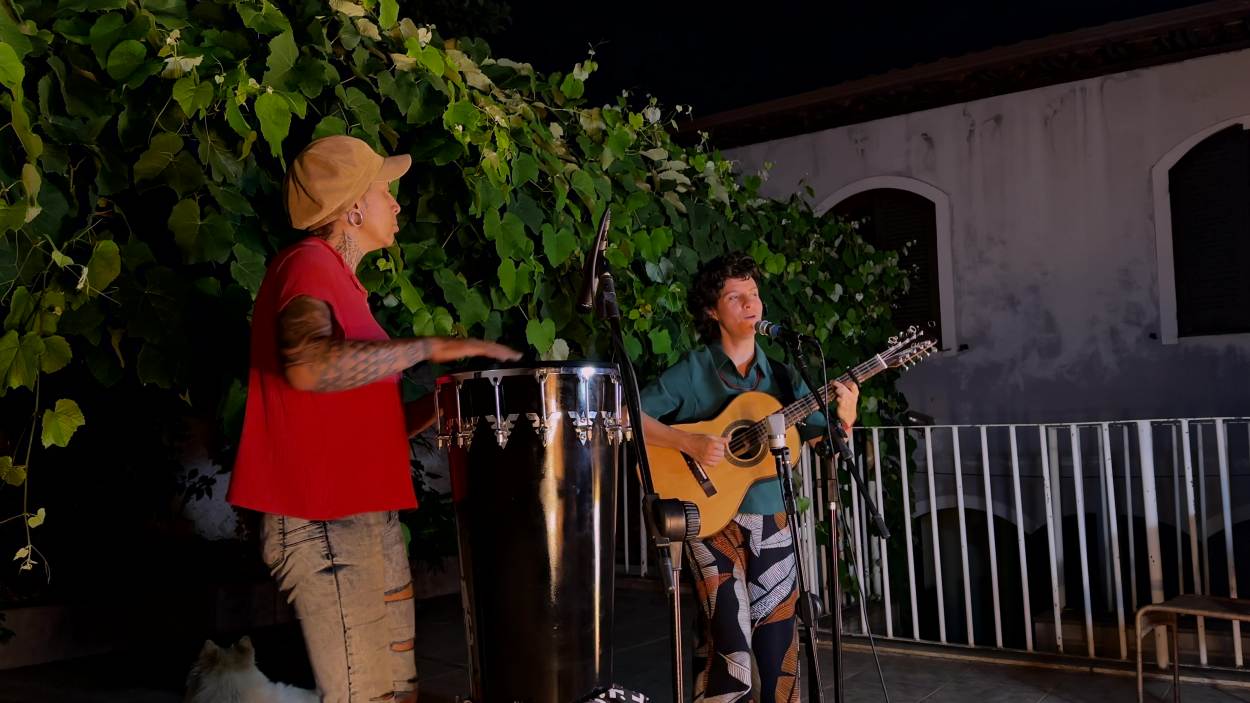The New Yorker on Joaquín Orellana: The Spine of Music
The New Yorker on Joaquín Orellana: The Spine of Music
Using instruments made from the materials indigenous to Guatemala, Joaquín Orellana "articulates a radically expansive and humane approach to avant-garde composition," writes Johanna Fateman.
Since the nineteen-seventies, this Guatemalan musician has been producing experimental soundscapes, using his ingenious and elegant útiles sonoros—sound tools—instead of conventional instruments. In “The Spine of Music,” an exceptionally inviting interactive show, at the Americas Society, viewers are encouraged to don gloves, grab a mallet, and try the tools out. Each one has a sculptural presence that seems to match its aural personality, from a whimsically rocking construction of weighted chimes and bright plastic beads to more austere, gonglike pieces, in which metal shapes dangle from chains in dark armatures…
But Orellana’s aim has never been imitation—rather, using instruments derived from the materials, the crafts, and the sonic traditions indigenous to his country, he articulates a radically expansive and humane approach to avant-garde composition.









